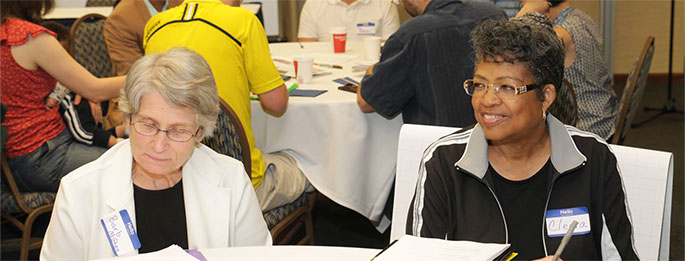Flint Charter Commission Seeking Input on Form of Government – Community Meeting January 21st

FLINT, MI – The City of Flint Charter Review Commission (CRC) is hosting a Form of Government Discussion and Introductory Workshop on Thursday, January 21, 2016 from 5:30 – 7:30 pm at Grace Emmanuel Baptist Church, 3502 Lapeer Rd, Flint, MI 48503. The CRC invites the public out to learn about the City of Flint Charter, the review process, and the different types of local government structures. The goal of the meeting is to begin community dialogue on the different forms of local government, what type should we have in the Flint City Charter and to promote additional ways to get involved in the Charter.
The CRC is an elected commission tasked with reviewing the Flint City Charter and suggesting proposed changes (if needed) to be voted on by the citizens of Flint. The CRC has three years to complete the review and present amendments or changes for a vote. The Flint City Charter was last re-written in 1974 and has had several amendments since then.
Forms of Government
At this meeting CRC will be presenting potential forms of government and asking residents which type of government you want to see in Flint. There are two main forms of local government Strong Mayor and Council-Manager.
The Strong Mayor type of government is also known as Mayor – Council. This form has an elected mayor and council with separate legislative and executive powers. In this form the mayor appoints the top administrators and may have veto power over the council. 40% of cities, including Flint, are using this “presidential style” form of government.
The Council – Manager form of government has an elected city council and a city manager appointed by the council who is an administrative professional. City council’s responsibilities would include goal setting, strategic planning, adopting budget, approving capital improvement plans, and acting through resolutions and ordinances. The city manager would be the administrative head of the city, running the day to day operations of the city and implementing the council’s policies and goals. The city manager would be hired and fired by city council. 60% of cities have this “corporation style” form of government.
Many variations exist between these two main types of local government structures. There is the “Non-executive” Mayor – Council, sometimes called “weak mayor” form of government where the mayor sits on city council and chairs the meetings serving as the chief policy and ceremonial official of the city. In this form the department heads operate independently from the mayor and the mayor is not the central administrator. In “hybrid” forms of government there are multiple different variations such as in a strong mayor form if the council has the ability to confirm the mayor’s appointments and the amount of access to department heads given to council members.
There are is so much to discuss, please come to the CRC Community Meeting: Form of Government Discussion.
